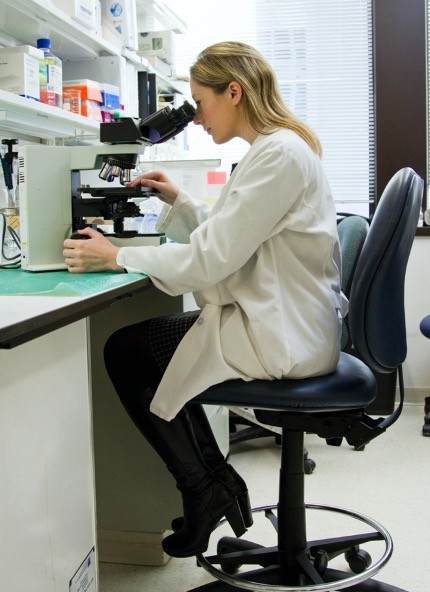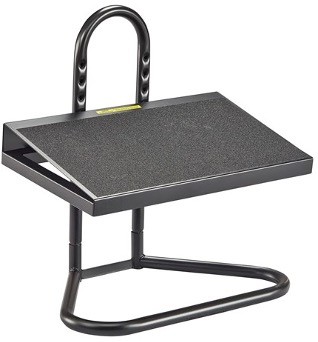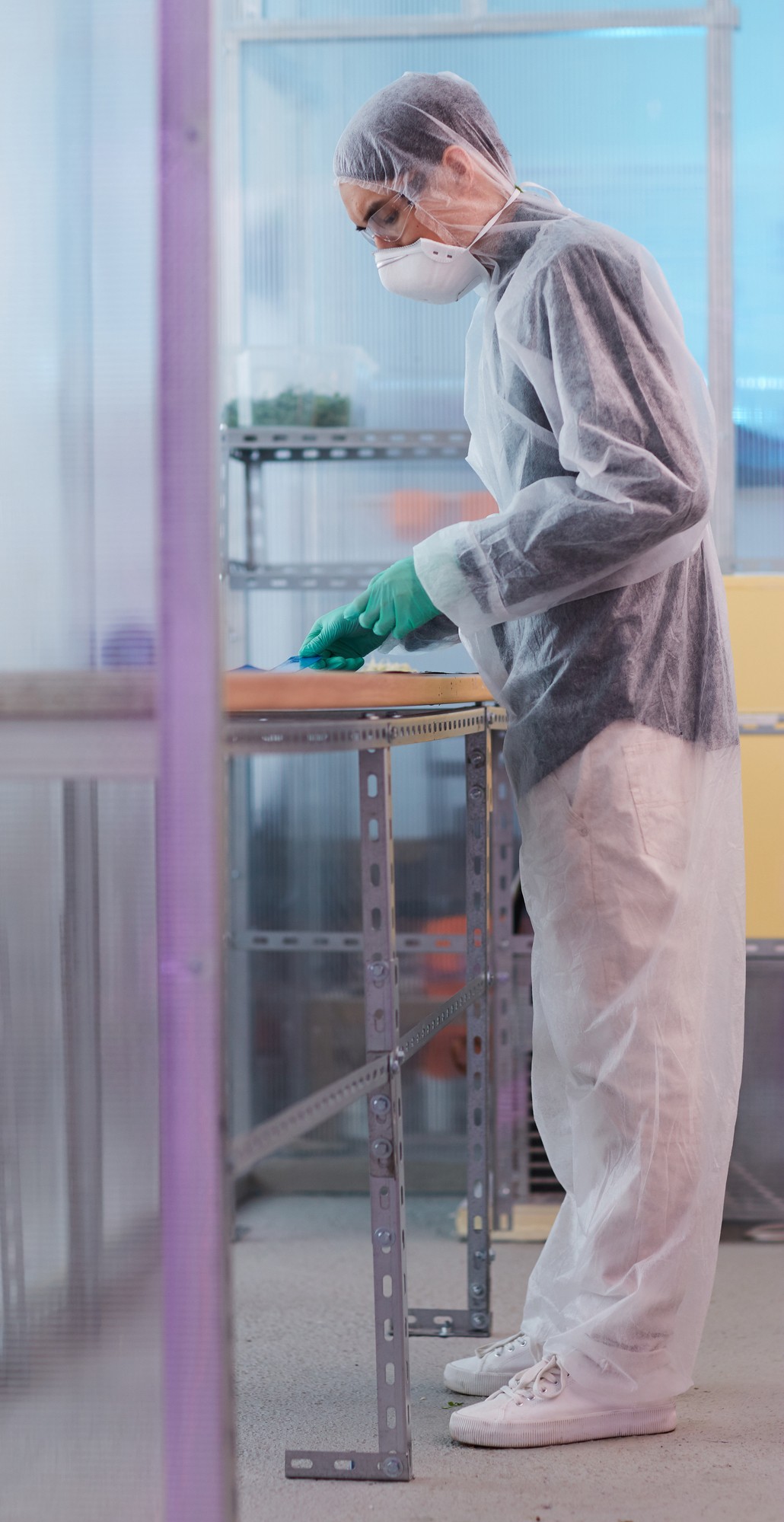
Do you work in a lab and are looking for tips to reduce back discomfort? If your back hurts after working long days in the lab, we can help. Tasks in the lab can be tedious and demand your entire focus. If not corrected, continued back strain and discomfort can lead to MSDs (musculoskeletal disorders). The good news is that you can help prevent your back discomfort!
Did you know? According to the US Bureau of Labor Statistics (BLS), back related MSDs accounted for 38.5% of all work-related musculoskeletal disorders in 2016.
There are different steps you can take to address normal body discomfort. Many of them involve correcting your posture and promoting a neutral position to reduce unnecessary muscle strain. Whether you spend your day sitting or standing (or both), we have some tips/solutions!
Lab Tips to Reduce Back Discomfort
TIP #1: Make sure you have an adjustable stool with good back support.
I have performed assessments of different types of lab environments. One of the things I have noticed is that there is usually a mix of different types of lab stools. Some are standard, some are multi-adjustable, and some don’t function properly at all. No matter what your height or body shape is, it is best to have an adjustable stool with good back support, which leads to my next recommendation – a properly adjusted chair will provide much better support.
TIP #2: Properly adjust your stool for maximum support
Many people jump right into work and spend their energy focusing on the tasks they are working on, often paying no mind to their chair/stool. What does it mean to properly adjust it? First, you want to make sure your chair is at the correct height, which will differ from person to person. Your lab stool seat should be adjusted or raised high enough so that when you sit, your relaxed elbows (hanging at your sides) should be at the same height as your workbench.
Next, the back support should be aligned to fit the curve of your lower back. Some lab stools have an adjustable know on the back that can be loosened, adjusted, then tightened to hold in place. Some have what’s called a ratchet back, meaning you can lift the back slightly and it will lock in different increments. If you raise it too high, then it resets and lowers. Find the right height and you should feel your back being supported.
The better lab stools will have a back with independent angle adjustment.
This means you can adjust the angle of the chair back closer to provide more support. You don’t want to adjust it fully forward, just enough to support your back while sitting erect. That way the chair back supports you instead of your back muscles being engaged the whole time you sit. That is often where a lot of back discomfort comes from – your back just gets tired from working all day.
You should always sit with your back against the backrest. There are many times that for whatever reason, individuals sit toward the front of the chair (also called “perching”). When this occurs, the back is not supported and can result in back fatigue or discomfort.
TIP #3: Have adequate foot support
Some individuals perch on their lab stools because they do not have adequate or lower body support. By sitting on the front of the lab stool, they can position their feet firmly on the floor. While this may feel better than having your feet dangling, this causes multiple issues: lower back discomfort, contact stress and restricted circulation in the legs, and leg strain. To correct or prevent this, an industrial footrest is recommended. That way you can adjust the height of the footrest to allow you to sit fully back in your lab stool and still have support while promoting a good, neutral posture.
Pacific Ergonomics provides many different types of adjustable lab stools, which can be used for different purposes.
Purpose of the Footring:
You may be wondering about the foot-ring for foot support located toward the base of the lab stool.
Believe it or not, the purpose of the foot-ring is to provide support while positioning yourself on the seat.
It is not recommended to use your foot-ring for foot support once seated, as it does not promote a neutral posture and can actually add back strain. Your feet should not be tucked under for two reasons.
- First, tucking your feet under the chair onto the foot-ring adds pressure to the back of your legs and can restrict circulation to your lower legs and feet.
- Secondly, by tucking your feet, this pulls your legs forward which adds strain on your spine, likely causing you to lean forward instead of allowing the chair to support your back.


TIP #4: Take micro-breaks
Many roles in the lab involve performing multiple tasks that have you on your feet and working in different areas. If you find yourself seated for a significant amount of time, you can take a micro-break to get up and stretch. It is recommended to get up and move for a few minutes every hour, or a minimum of once every two hours. The takeaway from that is to avoid sitting for more than two hours at a time.
TIP #5: When standing for prolonged periods, be sure to use an appropriate anti-fatigue mat.
Unlike many offices, the floors in labs are not carpeted and don’t have any supportive padding. This makes standing harder on your back, legs, and feet. If your tasks have you standing at stationary areas, an anti-fatigue mat can dramatically reduce the amount of compression on your back and feet throughout the day. Supportive shoes can help as well.


I can’t stress enough how much neutral posturing and reducing muscle strain can improve discomfort. If your lab stool is not adjustable, or you do not have some of the items needed to promote your posture (adjustable footrest, anti-fatigue mat), you may want to contact your manager or EHS team to request an assessment to get the items needed.
I hope these tips have helped!
